

This hybrid energy storage (ESS) system made of advanced lead and lithium batteries is currently the largest of its kind in Poland.
Strategically situated to enhance the Bystra Wind Farm in Northern Poland, this facility maximizes renewable energy usage and stabilize local energy supplies.
Through efficient energy time-shifting, the system provides a reliable power source during peak demand periods, lowering energy costs for industries and residents. It focuses on low-carbon technologies and high recycling rates, setting a new standard for energy solutions in the region.
| Location | Gdańsk County, Pomeranian Voivodeship, Poland |
| Project launch | October 2019 |
| Construction time | 12 months |
| Size of the system | advanced lead batteries: 26.9 MWh energy; 5 MW power | lithium batteries: 0.47 MWh energy; 1 MW power; 4.5-hour system |
| Battery type | 2 V advanced lead-carbon AGM batteries** and lithium batteries |
| Battery provider | Showa Denko Materials |
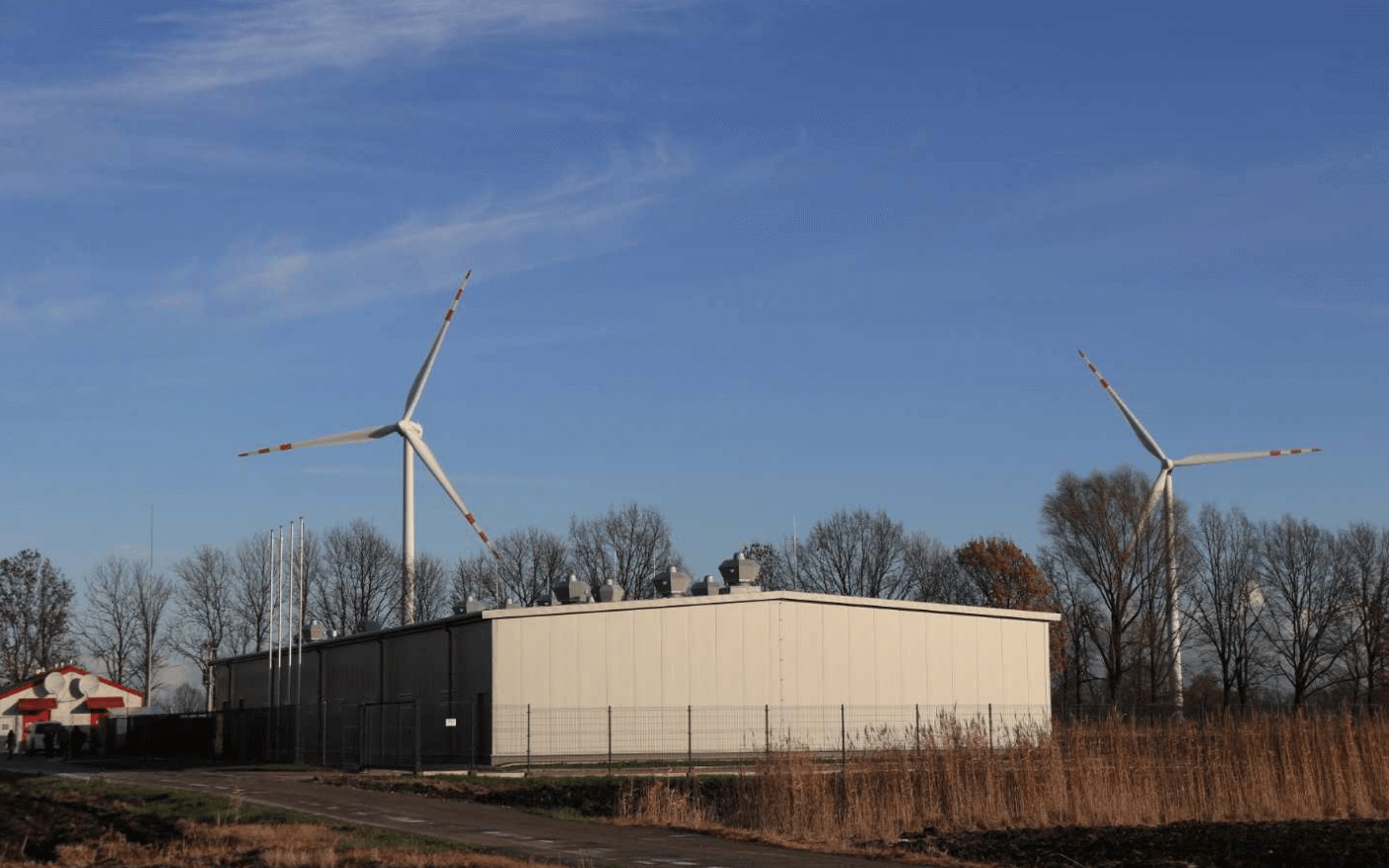
View CBI's Interactive Map of energy storage case studies
A recent Brussels meeting emphasized the need to address the priority for a long-term strategy for Critical Raw Materials in Europe. Following the Ukrainian-Russian conflict, not only war came back to our continent after the end of WW II, but we also witnessed adverse effects, such as soaring inflation, geopolitical tensions, and surging energy costs, significantly impacting our everyday lives. Alongside, with growing consequences of the climate crisis, there is no other action than to transition towards renewable energy sources to lower carbon dioxide emissions and make energy more efficient. In this scenario, the Critical Raw Material Act (CRM) sets out an ambitious vision for Europe that seems to fall short when it comes to financing its promises.
By Nicola Filizola

As I attended the Eurometaux rally on April 18th, discussing Critical Raw Materials, I couldn't help but ponder the complex challenges confronting the global scene today.
The Ukrainian-Russian conflict and its aftermath had unforeseeable consequences.
Inflation, international tensions, embargoes, and a dramatic increase in energy costs have affected every aspect of our lives. Electricity bills have soared, fuel prices have spiked, and industries are facing unexpected cost increases, occasionally leading to business failures.
As this was not enough, in the face of these economic challenges, we are also obliged to confront a harsh reality we’ve long ignored—the climate crisis and its severe implications for our planet and its inhabitants.

Consider this, annually, air pollution from fossil fuels and biomass burning is responsible for 7 million deaths worldwide, with associated costs nearing $30 trillion. By 2050, the financial impact of global warming could reach $25-30 trillion yearly. Shockingly, 90% of this pollution originates from energy sources, highlighting its grave impact on human health and the environment (Jacobson M., 2024, Clean, Renewable Energy & Storage for a Sustainable Future, Stanford University). Our dependence on fossil fuels not only raises pollution levels and keeps energy efficiency low, but also introduces risks of price volatility and geopolitical instability.
There is no way out, humanity stands at a crossroads: take decisive actions to protect our planet and future generations or passively face increasingly catastrophic events.
However, there is hope in this ugly scenario. The power to shape our future is in our hands. Embracing renewable energies such as wind, water, and solar is pivotal to electrifying our homes, industries, and transportation systems. But this shift demands innovation, investment, and political will.
If we are to do that decisively, Europe's green transition is expected to boost the demand for critical raw materials. European companies largely depend on imports for these minerals, with a significant amount coming from China. Therefore, this concentration in supply chains places Europe's climate and green industrial policies at considerable geopolitical risk.
The CRM, a new regulation of the European Commission, is part of the broader Green Industrial Plan and is aligned with the Net-Zero Industry Act (NZIA). It emerges as a vital element in this transition, ensuring the responsible extraction and processing of materials crucial for renewable technologies.
The Act, for instance, aims to diversify supply chains. It has set benchmarks for domestic capacities by 2030: at least 10% of raw materials must be sourced domestically, with targets of 40% for processing and 15% for recycling, reducing dependency on single suppliers.

While the CRM represents a positive and very ambitious step for Europe's strategic autonomy, it doesn’t fully tackle the vastness of the challenge. The Act aims to develop a European supply chain for critical raw materials by simplifying permitting processes, yet it needs to allocate additional funding. There’s no doubt private investment is crucial. However, as demonstrated by the US Inflation Reduction Act ($783 billion in provisions relating to energy security and climate change) mechanisms such as tax credits, grants, and loans can greatly bolster the confidence needed for sustained private investment in decarbonising the industrial sector.
To truly enhance resilience and reduce vulnerabilities, the EU must recognise building such resilience comes with a cost. This implies committing to substantial European funding and administrative support, setting realistic diversification targets for European companies through regulations, and ensuring that necessary resources support external trade and partnership strategies.
We live in an era when smart homes have become part of our everyday lives and energy storage systems are changing the way we think about energy.
Growing up, many of us were captivated by the portrayal of modern and futuristic homes on television. Each depiction was unique, yet they all shared a common charm—a certain "wow" factor that held our gaze, sparking imagination about the endless possibilities technology could bring to the future. Although we may not have parking spots for family spaceships in our backyards just yet, the vision of the future we once admired is closer to reality than we might think.
Today, we live in an era when smart homes have become part of our everyday lives. Our houses now integrate various inventions, all harmoniously working together. By integrating smart technologies that make our homes more energy efficient, we're taking steps towards preserving our planet and addressing the ongoing climate crisis.
Technology meets sustainability
An example of such smart technology is a battery energy storage system. This modern yet increasingly common technology enables us to capture and store energy for later use, marking a shift in how we power our homes. This article takes you on a journey through the modern home, exploring practical and innovative uses of energy storage systems. Transforming what may once have appeared as science fiction into part of the solution for a greener, more sustainable lifestyle, energy storage systems are changing the way we think about energy.

The tour already begins outside the house, where the renewable energy narrative forms under the open sky. Solar panels, discreetly placed on the roof, capture and convert the sun's warmth. This stored energy then finds its way back into the house, supplying hot water for daily use or heating indoor spaces, making every drop of sunlight count. This highlights how sustainability and modern living go hand in hand, showing that even our garden can play a role in powering the home.
As we enter the house and step into the living room, the last rays of daylight fade into the soothing glow of several desk lamps, all backed up by energy stored from today's sunshine. The television, gaming consoles, and even the WiFi router sip electricity from the reservoir of clean energy. This seamless integration of energy storage systems allows us to relax in front of the television after a long day or cosy up on the sofa with a favourite novel under the warm light of the lamp without giving a moment's thought to outside energy constraints.
Smart energy in action
Moving into the kitchen, the narrative of energy efficiency continues. Here, everyday activities continue as usual but with a green twist. Appliances, backed up by an innovative energy storage system, manage power usage with precision. The refrigerator hums quietly to keep the food fresh while the oven preheats for dinner, and the dishwasher stands ready, all running on stored energy. The effortless way the kitchen incorporates and utilises stored energy highlights the real-life benefits of energy storage systems, seamlessly blending functionality and sustainability.
Moving further into the house, we find ourselves in the utility area. Here, the air thrums with the quiet power of energy storage systems, balancing the home's temperature through a clever heat pump paired with batteries. These systems allow solar energy to efficiently power the heat pump, which can then be used to keep the house warm or provide hot water, even long after the sun has set.

Heading to the garage, the connection between energy management and mobility can be seen in action. An electric vehicle has become an essential part of the home's energy system, quietly charging and preparing for its next journey. Here, the vehicle-to-home power-sharing concept comes to life, allowing energy to flow back into the house during peak times or unexpected outages.
Green future with energy storage
Concluding the journey through the house, we can see energy storage systems integrated into our daily routines as a glimpse into a more sustainable future. From the warm comfort of the living room through the bustling kitchen and out into the garden, we see a snapshot of what could become the norm.
As the European Union strides towards a greener future with initiatives such as the Green Deal, homes equipped with battery energy storage systems are helping us get closer to energy independence. The battery energy storage market is predicted to grow significantly, and all battery technologies will play an important role. In light of the pressing need for climate action, these systems represent vital components of sustainable living and a greener, technologically advanced world.
Uncovering the key role of energy storage in Europe's green revolution
As we step into a new year marked by record-breaking temperatures, the urgency to address climate change intensifies. A recent analysis has confirmed 2023 as the warmest year on record, with over 200 days setting new daily temperature records.
It is crucial that cities join the shared drive to mitigate the climate crisis and transition to greener, more sustainable energy. This was emphasised at COP28, where fossil fuels were officially recognised as the primary cause of climate change for the first time after 28 years. Within Europe, the European Commission is leading the way by introducing ambitious initiatives such as the Fit for 55 package and Effort Sharing Regulation to shift towards a low-carbon economy. These initiatives have sparked innovation and collaboration among European cities as they strive to embrace a more sustainable path.
The second part of our series on sustainable cities highlights the transformative efforts of three European cities – Helsinki, Ljubljana, and Sofia – in embracing energy storage to spearhead their sustainability goals. These cities serve as examples of how local governments can initiate a transition towards renewable energy, sustainable transportation, and emission reduction.
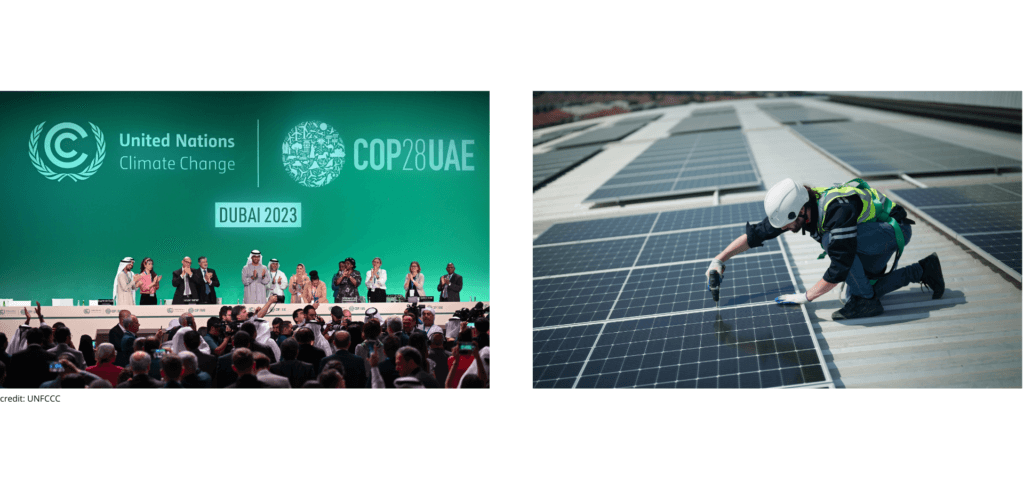
Embracing sustainable energy solutions
In the northern part of Europe, Helsinki is a pioneer in sustainability. The Finnish capital has embraced energy storage as a key element in achieving its goal of carbon neutrality by 2030. The city has launched an inventive project in collaboration with its energy provider to integrate battery energy storage into electric vehicle charging stations. The initiative taps into the potential of electric vehicles as mobile energy storage units, capable of storing excess energy generated from renewable sources. This energy can power the vehicles or be returned to the grid, making the energy ecosystem more connected and resilient.
According to the city's mayor, Juhana Vartianten, building a sustainable future is the most pressing issue we face today. "Helsinki wants to encourage cities around the world to embrace sustainability work and take concrete action. The coming years will determine the direction humanity takes, " said Vartiainen in the 2023 Voluntary Local Review, "That is why we must act now, and we must act together. We still have a long way to go, but fortunately, we are heading in the right direction."
Sofia, the vibrant capital of Bulgaria, is another city that has made sustainability a cornerstone of its urban development strategy. The city has implemented a number of innovative projects that are helping to reduce its reliance on fossil fuels and improve energy efficiency.
One of Sofia's most notable initiatives involves the installation of intelligent batteries throughout the city's public transportation network. These batteries act as mobile energy storage units, allowing buses and trams to store energy while braking or coasting downhill. The captured energy can then power the vehicles as they climb uphill or accelerate. This approach has shown promising results during its trial phase, with an expected 10-15% reduction in fuel usage and a 30% decrease in harmful carbon emissions, contributing to cleaner air and a more sustainable transportation system.
In addition to the environmental benefits, Sofia's battery storage project also streamlines the public transportation system, reducing the need for frequent recharging. The batteries provide a clean source of energy that can be used during peak hours, allowing passengers to rely on a more efficient public transportation system.

Harnessing the power of energy storage
Ljubljana, the capital of Slovenia, is known for its eco-friendliness and sustainable urban development. The city is taking steps to make its buildings sustainable while preserving its rich cultural heritage. One way Ljubljana is achieving this balance is by implementing energy storage systems in public buildings and infrastructure. The Ljubljana City Hall is equipped with a battery storage system that can store energy from the sun. Moreover, Ljubljana aims to expand its energy-saving efforts beyond City Hall by installing energy storage systems in public buildings such as schools, libraries, and other facilities.
Integrating energy storage systems into public buildings is a win-win solution for both cities and citizens. By doing so, the city enhances energy security, lowers energy expenses, and provides backup power during grid outages. This not only reduces the city's environmental footprint, but also provides its citizens with reliable access to energy.
In a world where climate change looms, Helsinki, Ljubljana, and Sofia are examples of how innovation and energy storage can shape a sustainable future. These cities have set the bar high by adopting measures that align with the EU's Green Deal goals, aiming to reduce carbon emissions and switch to renewable energy sources.
Helsinki's electric vehicle charging stations, Ljubljana's public buildings integrated with battery systems, and Sofia's intelligent battery storage for public transportation all show how technology can help create a cleaner, more resilient planet. By reducing carbon emissions and embracing renewable energy sources, these cities are leading the way in the fight against climate change.
The Consortium for Battery Innovation's impactful presence at European Commission’s SET Plans Conference
In the ever-evolving landscape of energy storage, the Consortium for Battery Innovation (CBI) stands at the forefront, driving advancements in battery technology. At the recent SET Plans Conference in Viladecans, the CBI had a strong presence with its Senior External Affairs Manager, Nicola Filizola, showcasing the consortium's commitment to fostering collaboration and innovation within the energy transition landscape.
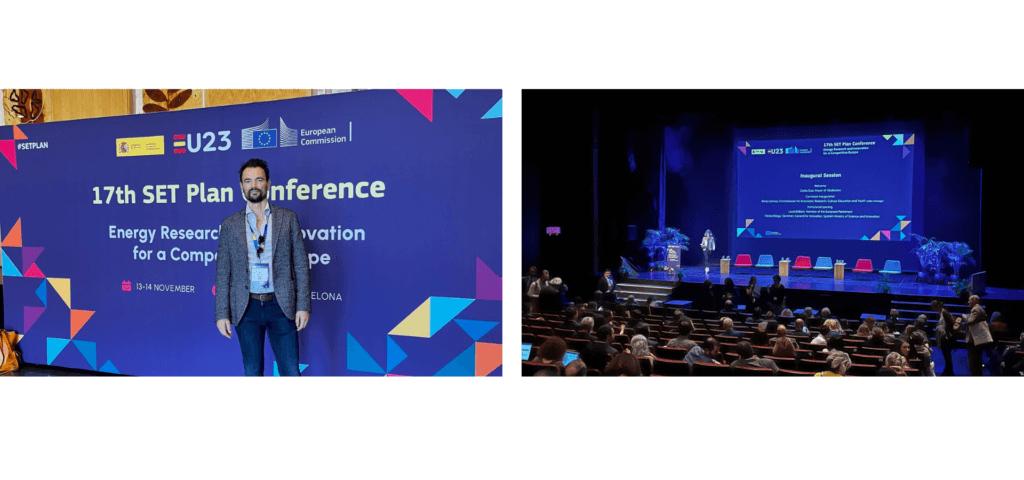
The revamped SET Plans to address energy policy
The European Strategic Energy Technology (SET) Plan was established in 2007 and since the creation of the energy union in 2015, it became one of the main instruments of the energy union’s 5th pillar on research, innovation, and competitiveness.
During the conference, the European Commission confirmed its commitment to reinforcing the SET Plan, and its acknowledgement of the key role that the initiative will play in delivering the European Green Deal, REPowerEU and the Green Deal Industrial Plan, with a particular emphasis on the Net Zero Industry Act. This will help to accelerate the clean energy transition, increase the EU’s competitiveness, and ultimately deliver the EU’s ambitious climate and energy objectives.
Boosting European competitiveness and technology sovereignty
The EU is a frontrunner in the deployment of sustainable energy solutions and in clean energy research and innovation. However, this leadership is not matched by an equally strong position in the manufacturing of net-zero technologies.
To strengthen Europe’s technological and industrial sovereignty, the European Commission has proposed the Green Deal Industrial Plan, which includes the Net-Zero Industry Act for increasing the EU manufacturing capacity of net-zero technologies, and the Critical Raw Materials Act for securing the supply of critical raw materials. The revised SET Plan will help convert innovations into marketable solutions that can be produced and scaled up in the EU.
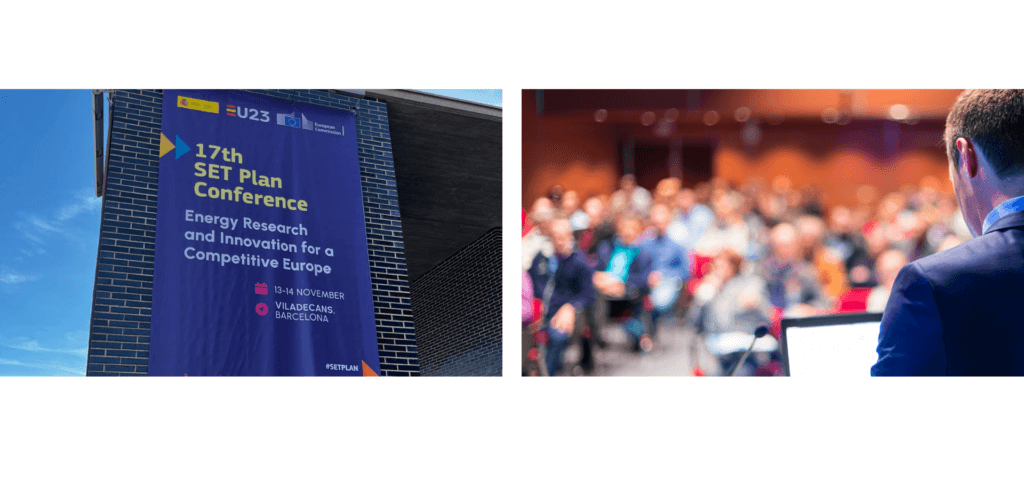
Advancing battery technologies
The SET Plans Conference served as a global platform for discussing Sustainable Energy Technology Plans, bringing together experts, policymakers, and industry leaders to deliberate on the future of energy technologies. The CBI consortium's presence was crucial in highlighting the pivotal role that advanced lead battery technologies play in achieving sustainable energy goals.
As the battery industry continues to play a pivotal role in the global transition to clean energy, the CBI's active participation in conferences of this nature reinforces its position as a driving force in shaping the future of energy storage.
For more information on how to develop and reinforce the Brussels footprint for the advanced lead battery ecosystem, feel free to contact our Senior External Affairs Manager at nicolafilizola@batteryinnovation.org
Europe's commitment to renewable energy in the face of climate change
Climate change is happening right before our eyes and presenting new challenges for the world. European communities are grappling with increasingly frequent and intense extreme weather events that have profound impacts and demand our attention. The consequences are severe, from urban areas transformed into fiery landscapes during sweltering heat to towns inundated by floods.
The root cause of the climate crisis is our heavy reliance on fossil fuels. Burning these fuels releases greenhouse gases into the atmosphere, trapping heat and warming the planet. This disturbs the delicate balance of our climate system and intensifies the occurrence of extreme weather events. To face this crisis, we need to move towards a cleaner future with renewable energy sources such as solar and wind power. In addition to reducing our dependence on fossil fuels, renewable energy is essential for strengthening community resilience. This aligns with the European Union’s Green Deal, which outlines a comprehensive set of policies aimed to achieve a carbon-neutral economy by 2050.

European summer of extremes
This summer, Europe experienced a series of record heatwaves and devastating wildfires that have swept across the continent. The European Forest Fire Information System reports that up to 41% of the area burned in the EU is in Natura 2000 protected sites. In 2023 alone, wildfires have released more than 20 million tonnes of carbon dioxide into the atmosphere, exceeding the European average over the last two decades.
The Mediterranean region was hit hardest by this year's heat waves. The streets in Greece's ancient port town of Gytheio shimmered as temperatures climbed to an astonishing 46.4 degrees Celsius, setting a new record since record-keeping began in 2006. Life stood still in the sweltering heat, and the streets remained deserted. The heatwave also triggered a wave of wildfires that ravaged the countryside. Nearly 20,000 tourists abandoned Rhodes hotels due to the threat of wildfires, marking the largest evacuation of its kind in the country's history. The intensity of the heatwave caused widespread power outages and plunged towns into darkness. Hospitals struggled to maintain patient care, and businesses were forced to shut their doors.
In May 2023, Italy found itself in the grip of unforgiving weather. The tranquil rivers of Tuscany turned into raging torrents that surged through towns and villages, leaving destruction in their wake. Homes vanished beneath the rising waters, and critical infrastructure crumbled under the weight of the deluge. The downpours lasted 80 hours of relentless rainfall over six days, causing flooding and infrastructure collapse, leaving the affected areas in darkness. Over 20,000 citizens were forced to evacuate and seek refuge in temporary shelters such as schools, sports halls, and gyms.
Not only floods but also severe storms with strong winds are becoming a pressing concern in Europe. This year, Norway faced several relentless storms marked by a historic amount of rainfall. The Norwegian meteorological institute reported extremely heavy rainfall in parts of Norway, marking the strongest in the last 25 years. As winds and heavy rain swept across the region, trees were uprooted, flights faced delays, ferries stopped running, and power lines scummed to disruption. In cities like Oslo, people were urged to work from home. Meanwhile, in the small village of Bagn, nested in the heart of a valley surrounded by forests, landslides wreaked havoc, severing its residents from the outside world.
Researchers at Newcastle University predict extreme weather events will become more frequent due to the climate crisis. "Alongside drastically cutting emissions, countries must build more resilient infrastructure," the researchers said.

Renewable energy and climate resilience
In the face of a changing climate, Europe is at a crossroads. Floods, wildfires, and storms dominate the headlines. As extreme weather events become more frequent, the transition to renewable energy is necessary. The European Union recognises this need and has adopted bold initiatives such as the European Green Deal, a comprehensive roadmap to reach climate neutrality by 2050. Central to this strategy is the Fit for 55 initiative, which aims to reduce greenhouse gas emissions by at least 55% by 2030. Additionally, the RePower EU plan aims to decrease the dependency of the European Union on Russian fossil fuels and promote green energy.
These initiatives address the challenges highlighted by the extreme weather events. By transitioning to renewable energy, Europe reduces its dependence on fossil fuels and mitigates the effects of climate change. Renewable energy, coupled with energy storage systems, can enhance communities' resilience and help them withstand increasingly severe weather events. Renewable energy ensures a reliable electricity supply amid widespread damage from floods, provides backup power to fire stations during wildfires, and restores power to villages cut off during severe storms. As Europe navigates through new climate challenges, transitioning to clean energy becomes a vital tool to help us ensure a safer and more sustainable future in the face of these extreme weather events.
Want to know more about CBI’s work to achieve a carbon neutral economy in Europe? Subscribe to our newsletter here.
Funding: Innovate UK and Milken-Motsepe Prize in Green Energy
Duration: April 2023 – April 2024
Project partners: Consortium for Battery Innovation, Loughborough University, Tiyeni
Objective: Aftrak developed a green electricity solution for rural communities combining a solar energy microgrid with a micro electric tractor to mechanise land preparation.
Low-cost, Circular, plug & play, Off-grid Energy for remote Locations including Hydrogen
Funding: Horizon Europe
Duration: 1 January 2023 – 31 December 2026
Project partners: Consortium for Battery Innovation, Commissariat a l'Energie Atomique et aux Energies Alternatives, Hollingsworth & Vose, HOPPECKE Batteries, Lahore University of Management Sciences, Loughborough University, RHYDE, Sunkofa Energy, Università degli Studi di Napoli Federico II, University of Gabes
LoCEL-H2 (Low-cost, Circular, plug & play, Off-grid Energy for remote Locations including Hydrogen) is developing a new solution to bring renewable electricity and clean cooking fuel for off-grid communities.
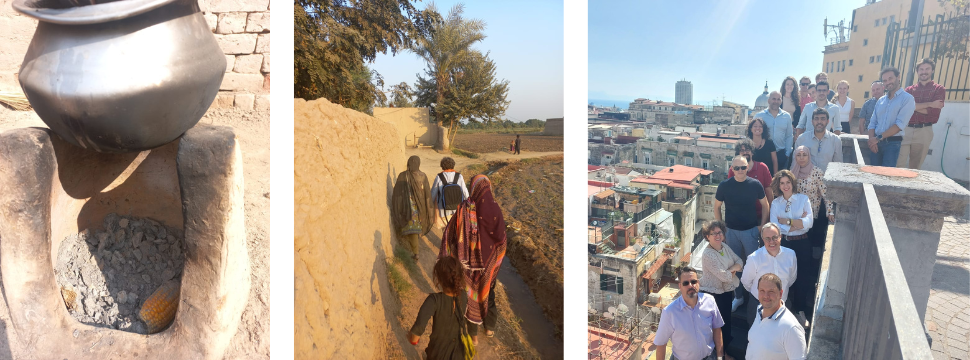
The solution comprises three core technical innovations:
LoCEL-H2 will conduct two pilot programs, one located in Zambia and the other in Côte d’Ivoire, assessing each community’s energy needs and tailoring the solution in order to provide renewable energy and cooking fuel for approximately 30 households and businesses in each pilot.
For more information visit project's website: https://locelh2.org/
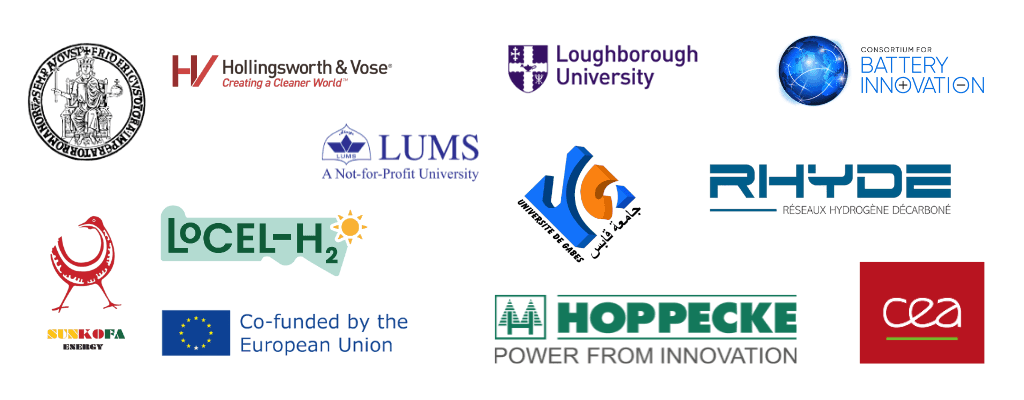
The European Energy Transition
By Nicola Filizola
As the world copes with the urgent need to address climate change and reduce greenhouse gas emissions, Europe has been leading the charge in transitioning to a cleaner and more sustainable energy future. The European energy transition is a comprehensive shift from traditional fossil fuels to renewable energy sources, such as wind, solar, hydro, and geothermal power. Among the critical components enabling this transformation, lead batteries have emerged as a key technology that plays a pivotal role in the transition's success. In this article, we will explore the energy transition in Europe and delve into the essential role that batteries are playing in shaping the continent's greener and brighter future.
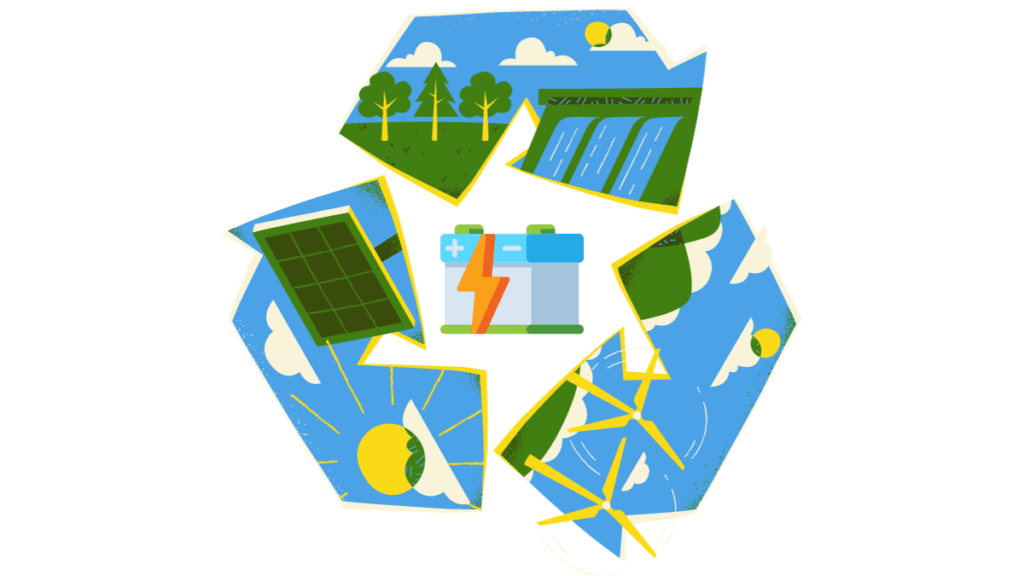
The Growth of Renewable Energy in Europe
The European Union (EU) has been at the forefront of advocating for clean energy and sustainability. Through initiatives like the European Green Deal and the Paris Agreement, EU member states are committed to reducing their carbon emissions, fostering innovation in clean technologies, and achieving climate neutrality by 2050.
One of the main challenges of integrating renewable energy sources into the existing energy infrastructure is their intermittency. Solar and wind power, for instance, depend on weather conditions and daylight availability. To ensure a stable and reliable energy supply, an efficient energy storage system is essential, and that's where batteries come into the picture.
The Challenge of Intermittency
Unlike conventional power plants that can provide a consistent energy output, solar and wind power are dependent on weather conditions and natural variations. Cloudy days and calm winds can lead to a drop in power generation, causing fluctuations in the grid. This intermittency poses challenges to grid stability, and the power supply must be balanced in real-time to meet demand. If renewable energy sources are to dominate the energy mix, an effective and efficient energy storage solution is imperative to address this variability.
Batteries: The Key to Storing Renewable Energy
Batteries are essential components of the energy transition as they serve as a bridge between renewable energy generation and consumption. These energy storage systems can store surplus electricity when generation exceeds demand and release it when demand surpasses generation. In essence, batteries help to smooth out the intermittent nature of renewables and provide a stable supply of electricity to the grid.
Batteries act as buffers, absorbing excess energy during periods of high generation and releasing it when generation dips. By doing so, they stabilize the grid and ensure a steady supply of electricity, reducing the risk of blackouts and power disturbances. Moreover, batteries can respond rapidly to fluctuations in demand, providing grid operators with a valuable tool to manage the grid effectively.
The energy transition in Europe is also characterized by a shift towards decentralization, with an increasing number of small-scale renewable energy installations, such as rooftop solar panels and community wind farms. Batteries play a vital role in this decentralized energy landscape by enabling consumers to store and manage their locally generated energy. This promotes energy autonomy, reducing the reliance on centralized power plants and enhancing energy security.
Batteries make it possible to integrate a higher share of renewables into the grid. By storing excess energy during periods of high generation, batteries ensure that the energy is not wasted and can be used during times of low generation. This feature is particularly crucial during seasonal variations when renewable output may vary significantly.
Batteries also play a significant role in electrifying transportation, another essential aspect of the energy transition. The growth of electric vehicles (EVs) is dependent on advanced battery technology, allowing for longer driving ranges and faster charging times. Widespread EV adoption not only reduces greenhouse gas emissions from the transportation sector but also opens up the possibility of using EV batteries for grid storage through vehicle-to-grid (V2G) technology.
In conclusion
The energy transition in Europe represents a monumental effort to combat climate change and create a sustainable energy future. The integration of renewable energy sources is a crucial step in this journey, but their intermittent nature presents challenges that must be addressed. Lead batteries, together with other technologies, emerge as the silent protagonists, providing a robust and reliable energy storage solution. From enhancing grid stability and enabling renewable integration to empowering decentralized energy systems and fostering electric vehicle adoption, lead batteries will play a multifaceted role in reshaping Europe's energy landscape. As technology advances and costs continue to decline, the potential of batteries will only grow, propelling Europe towards a cleaner, greener, and more resilient energy future.
The lead battery industry could be in line for a $10 billion share of the burgeoning energy storage market within the next decade.

Research into upcoming projects and opportunities indicated that the ESS landscape is forecast to be 550GWh by 2030 with a value of $30-$50 billion for all battery technologies.
The lead battery industry has set its sights on securing 100GWh of that potentially lucrative ESS market.
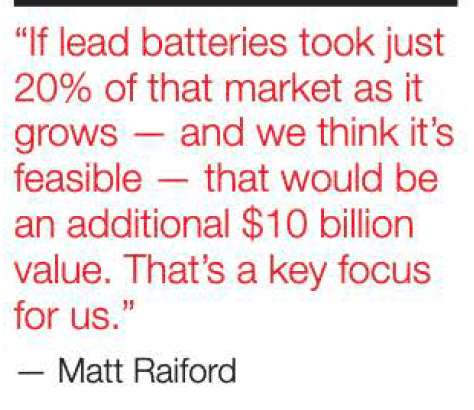
CBI launched its first technical roadmap in 2019 setting specific goals for the end of 2022.
“It was all really market-driven. We used those targets to select our program. And the result of the
projects that we funded have pretty much shown that we delivered on these goals that we set.”
There are now batteries on the market, primarily from our members in the US and Asia, that meet that criteria.
This means there are now have advanced lead batteries on the market-oriented toward ESS that have an impressive globalized cost of ownership for the system, says Raiford.
“The way we view it as battery scientists is cycle life — most key stakeholders look at it from total cost of ownership.
“So we see stationary batteries now that really perform along the lines of lithium.”
Read the full article from Batteries International
This European research collaboration aims to optimise lead battery performance for micro-hybrids. Researchers from Fraunhofer ISC and Wroclaw University are investigating the effect of carbon surface chemistry on the battery performance, and the goal is to understand which kind of surface chemistry is beneficial for improved charging and discharging behaviour for lead batteries.
Research projects like this one are proving to be relevant for wider scientific topics, such as low-emission vehicles, electrification and decarbonisation, as well as for carbon additive research.
According to Expert Group Manager from Fraunhofer ISC, Jochen Settelein, to follow the energy transition, batteries play a central role and lead batteries are safe, highly recyclable, produced at a low cost and the entire value chain exists within single countries or regions. By undertaking research and innovation into the lead battery technology, researchers are finding their way to adapt this « well-established technology » to the needs and requirements of the current energy transition.
Through this specific project, CBI is bringing together leading European researchers, scientists, and institutions to work towards a common goal, achieving CBI’s Technical Roadmap goals for the automotive sector, such as improving DCA.
Watch full video about this project here:
The share of renewables for electricity generation by 2030 is expected to grow to 35%, and this global shift is relying on innovative technologies to harness this energy in clean, affordable and sustainable ways.
A big focus area for this shift is how to ensure that the clean energy transition fairly includes communities in parts of the world without reliable access to electricity or energy resources.
Responding to Europe’s Horizon call for funding proposals, a consortium of organizations spanning the energy, batteries, hydrogen academic and NGO sectors has joined together to develop a novel concept called LoCEL-H2.
Aiming to develop a sustainable, scalable, multi-vector energy solution to improve the lives of vulnerable communities, the project is based on renewables, battery storage and a novel hydrogen technology for cooking/fuel.
Low-cost, Circular, plug & play, off-grid Energy for remote Locations including Hydrogen, LoCEL-H2 is recognising the need for a fair energy transition across the globe and working to deploy pilots in two communities that have no access to reliable sources of energy.

This innovative concept includes battolyser hydrogen technology under development at Loughborough University, which will be used as cooking fuel for the communities where the modular off-grid energy solutions will be installed.
The future needs innovation. And it needs technologies to work together and complement each other to deliver innovative solutions for the clean energy transition. Bringing together different sectors, each with expertise in various technologies and energy solutions, LoCEL-H2 aims to ensure clean energy is paired with socioeconomic benefits for remote communities around the world.
See Press Release here.
Watch the first video about the project:
As part of CBI’s technical team, we’ve recently welcomed Begüm Bozkaya. With a BSc degree in Chemistry from the Middle East Technical University and an MSc degree in Materials Science from the Technical University of Munich, she gained extensive knowledge on the effects of carbon additives on negative plates for lead batteries, after using this as a Ph.D. research topic.
After working on several industrial projects for the past 6 years, Begüm joined CBI to gain a broader perspective on lead battery research as her role involves directly working with CBI’s global members from different companies and stages of the supply chain. She will be managing all of CBI’s European Technical projects as well as supporting CBI’s standards program.
According to her, CBI is doing what no one else in the industry is by “combining the knowledge from the industry and research institutes and collecting them in a non-competitive environment”. This means it’s possible to pool knowledge from a range of battery experts in order to advance lead battery technology for all applications, from energy storage systems to automotive.
As part of CBI’s team based in Europe, it is also important to look at the role of EU industry-research-academia partnerships in driving innovation. “We need to strongly defend the place of lead batteries. This is a well-established technology: we are cost-effective, recyclable, we have innovative research initiatives underway, and we’re committed to contributing to a cleaner future in the energy sector, especially to facilitate decarbonisation and support climate goals. It is vital that the EU includes all batteries in their future work plans”.
In that sense, the work developed by CBI through its Technical Roadmap has been essential to collect relevant information for lead battery applications and to help educate the audience regarding the future of this technology that has an enormous potential:
“If we can open new research topics and innovative ideas that can cover what we have in the roadmap, I’m sure lead batteries can still be considered a key player in the efforts to decarbonise, and developed further as a result. Research is the key point.”

When mentioning the new year and the developments that we can expect from advanced lead batteries, Bozkaya said that bipolar or advanced PbC batteries “can bring new research topics” for the industry and that these are “great candidates for EU initiatives”:
“There’s a bright future for advanced lead batteries and a lot of great research projects being developed as a result of CBI’s work, so I believe that in the near future we will be able to show even more how committed the industry is to Europe’s climate goals and, therefore be more involved with EU initiatives through lead battery research projects”.
For more information on CBI’s innovative technical program, click here.
The 4th edition of EASE’s Energy Storage Global Conference took place last week (19 – 21 October) in Brussels and online. With the support of the European Commission, the event provided three days of talks and discussions around the future of energy storage, its current market, policy frameworks and the latest trends in technology.
For the opening session, Maroš Šefčovič, Vice-President of the European Commission for Interinstitutional Relations and Foresight, spoke about the key role of energy storage and batteries to achieve climate neutrality by 2050, while highlighting its increasing demand to answer the new targets for renewable energy and carbon emission standards.
Šefčovič mentioned the importance of innovation and competition to keep investing in current technologies, improving performance and using advanced materials: “Europe must invest, not only in improving existing solutions but also in developing next generation breakthrough technologies”.
EASE’s President, David Post, also predicted battery storage of 7.7TWh by 2030 and highlighted the importance of supporting all technologies.
The last day of the conference was focused on discovering the latest cutting-edge energy storage technologies and CBI’s Research and Innovation Manager, Dr Carl Telford, spoke in a session dedicated to “Electrochemical and Electrical Energy Storage”, presenting the work that CBI has been developing through research and innovation for advanced lead batteries.
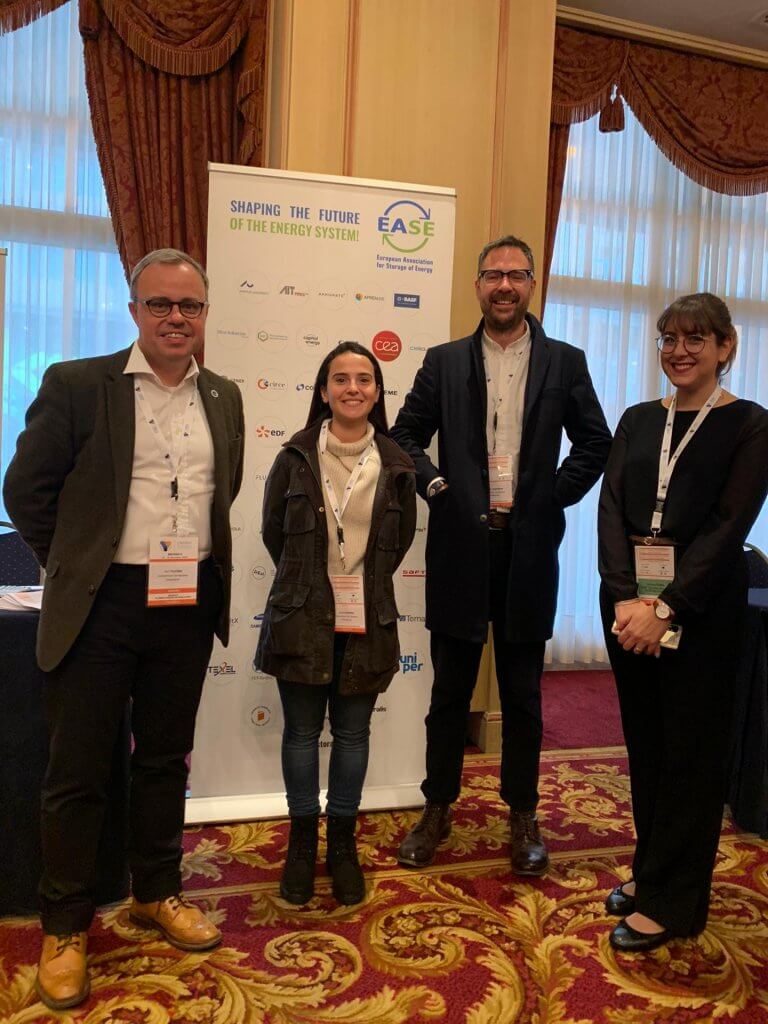
CBI's 2021 Technical Roadmap was presented to illustrate how constant performance improvement and technological advances can create limitless opportunities for the lead battery industry to help achieve global electrification and decarbonization targets.
While navigating through Europe’s funding landscape and showcasing European energy storage case studies using lead batteries (with Exide Group and Systems Sunlight SA), Dr Telford explained the challenges that the industry might face when applying through a “very complex” funding system, but also concluded with an optimistic note on the amount of opportunities that exist for energy storage and batteries in terms of public funding, proving that these are indeed necessary for the future:
“When considering the EU’s high-level goals, the speed of action required to mitigate the climate crisis, it is crucial that all energy storage solutions are not only available for deployment, but also encouraged”.
